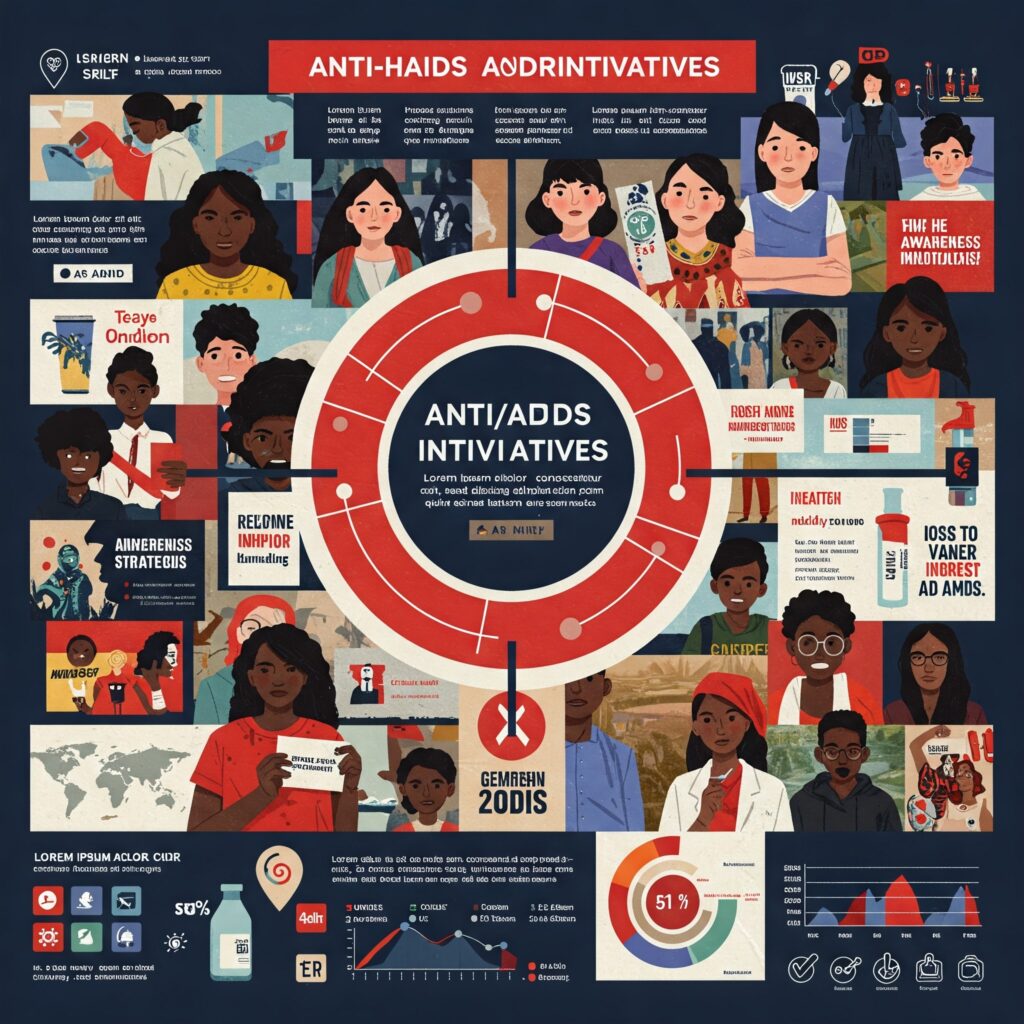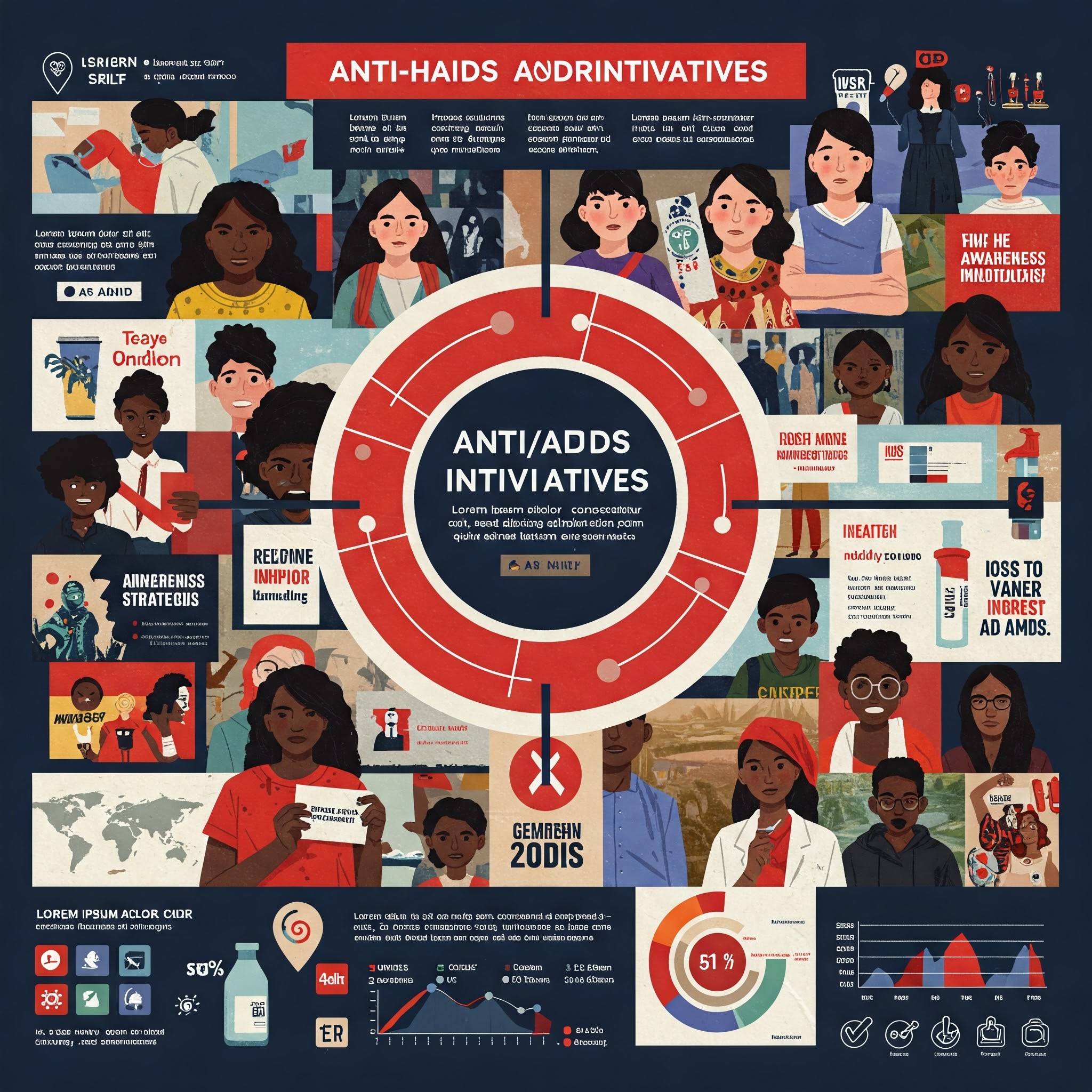THE IMPACT OF ANTI-HIVS / AIDS PROGRAMMES OF ABS TELEVISION ON THE SEXUAL HABITS OF YOUTHS

Introduction
HIV/AIDS has stayed a basic general medical problem, especially in locales like sub-Saharan Africa, where contamination rates among youngsters are high. This present circumstance calls for powerful correspondence procedures to advance mindfulness and energize more secure sexual practices. The media, particularly TV, assumes a significant part in wellbeing training. In Nigeria, ABS TV (Anambra Broadcasting Administration) has been a central part in the battle against HIV/AIDS, circulating projects that plan to teach and emphatically impact the sexual way of behaving of young people. This exposition investigates how these enemy of HIV/AIDS programs have influenced the sexual propensities for youngsters, featuring the two victories and difficulties.
The Job of Media in General Wellbeing Efforts
The media fills in as a useful asset for molding general assessment and impacting conduct. TV, with its extensive range and capacity to consolidate visual and hear-able components, is especially powerful in conveying wellbeing messages. General wellbeing efforts utilize different organizations, for example, show series, syndicated programs, narratives, and public help declarations (public service announcements) to bring issues to light. Through these projects, youngsters get sufficiently close to data on HIV avoidance, safe sexual practices, and the significance of testing and directing.
Overview of ABS Television’s Anti-HIV/AIDS Programmes
ABS TV has sent off a few enemy of HIV/AIDS drives pointed toward diminishing the spread of the infection among young people in Anambra State. These projects are intended to teach watchers on the risks of unsafe sexual ways of behaving while at the same time advancing more secure practices. Instances of such drives incorporate instructive television shows including wellbeing experts, dramatization series that portray genuine situations, and public service announcements that empower deliberate testing. The essential objective is to build information and mindfulness, eventually prompting positive conduct change among youngsters.
HIV (Human Immunodeficiency Infection) and AIDS (Acquired Immunodeficiency Syndrome) have been a critical worldwide wellbeing challenge since the mid 1980s. HIV is an infection that goes after the safe framework, explicitly focusing on CD4 cells (Lymphocytes), which are significant in fending off contaminations. Over the long haul, untreated HIV can debilitate the resistant framework to the place where it can never again battle off contaminations and sicknesses, bringing about the improvement of AIDS — the most extreme period of HIV disease.
Internationally, HIV/AIDS has impacted huge number of lives. In spite of significant advancement in clinical headways, including antiretroviral treatment (Workmanship), counteraction stays a vital concentration in fighting the spread of the infection, particularly among weak gatherings like youth.
Influence on Youth Sexual Propensities
The impact of ABS TV’s projects on youth sexual way of behaving is huge however changes among people. Information from reviews and meetings with watchers uncover that numerous youngsters have taken on more secure sexual practices because of these missions. Expanded condom use, more noteworthy familiarity with HIV testing administrations, and open conversations about sexual wellbeing are among the positive results revealed. Notwithstanding, the degree of effect relies upon elements like recurrence of openness to the projects, content pertinence, and companion impact.
For certain adolescents, these projects act as their essential wellspring of data on sexual wellbeing, filling holes left by deficient sex training in schools and social restrictions encompassing conversations on sexuality. Others might stay detached or unaffected because of restricted admittance to TV or profoundly imbued social and strict convictions that oppose open discussions about sexual way of behaving.
Risk Factors and Difficulties in Youth Education
A few variables place young people at an expanded gamble of contracting HIV. These include:
Early sexual presentation: Participating in sexual action very early on improves the probability of numerous sexual accomplices, in this manner elevating the gamble of contamination.
Conflicting or no condom use: In spite of mindfulness crusades, numerous youngsters neglect to reliably utilize condoms. Reasons range from confusions about HIV transmission to an absence of admittance to condoms.
Substance misuse: Medication and liquor use weaken judgment and are connected to expanded dangerous sexual way of behaving.
Peer tension and accepted practices: Adolescents are many times impacted by their companions and winning accepted practices with respect to sexuality, which can prompt hazardous way of behaving.
Absence of extensive sex training: In numerous social orders, conversations on sex are untouchable. Subsequently, youngsters are left with restricted information about safe sex rehearses, which builds their gamble of contracting HIV.
Misinterpretations and Fantasies About HIV/AIDS
Fantasies and falsehood about HIV/AIDS have long added to its spread and shame. Normal confusions incorporate convictions that HIV can be contracted through easygoing contact, that it just influences specific gatherings (e.g., sex laborers or intravenous medication clients), or that customary medication can fix the illness. These legends upset endeavors at avoidance and treatment and add to the social disengagement of those living with HIV.
The media plays a fundamental part in dispersing these misinterpretations and advancing precise data about HIV/AIDS . In this specific situation, ABS TV’s enemy of HIV/AIDS programs assume a basic part in illuminating and teaching young people about the real factors of HIV, hence uplifting conduct change and lessening unsafe practices.
Media as a Tool for Public Health Education
The media assumes a basic part in impacting public way of behaving and forming cultural discernments, especially in the field of general wellbeing. With the ascent of mass correspondence, TV has turned into a strong mechanism for scattering wellbeing data and making mindfulness on major problems like HIV/AIDS. In this section, we investigate the impact of media as a device for general wellbeing schooling, with a specific spotlight on ABS TV and its enemy of HIV/AIDS programs pointed toward working on the sexual propensities for young people.
The Force of Media in Shaping Way of behaving
Media has a special capacity to reveal, instruct, and impact crowds by introducing engaging stories and genuine data. The hypothesis of media impact recommends that individuals frequently take on mentalities and ways of behaving in light of rehashed openness to messages from confided in sources. With regards to general wellbeing, media missions can assist with accomplishing the accompanying:
Bring issues to light: Teaching people in general about the nature, dangers, and anticipation of sicknesses.
Decrease disgrace: Testing misinterpretations and advancing inclusivity for impacted people.
Advance positive conduct change: Empowering better ways of life and hazard decrease rehearses.
Contextual analyses of Effective Media Missions
Various effective general wellbeing media crusades have exhibited the force of TV in advancing conduct change:
The ABC Lobby (Restraint, Be Dependable, Utilize a Condom): This Ugandan mission is generally viewed as a critical supporter of the country’s decrease in HIV pervasiveness in the mid 2000s.
South Africa’s Spirit City: A famous TV show series that consolidated wellbeing messages, including HIV/AIDS mindfulness, into its storyline, fundamentally impacting watchers’ information and conduct.
MTV’s Shuga: A young centered show series that featured HIV counteraction, testing, and treatment. Review showed that watchers were bound to get tried for HIV and embrace more secure sexual practices in the wake of watching the show.
ABS TV, a conspicuous telecaster in the locale, has adopted a proactive strategy to tending to HIV/AIDS through designated programs focused on young people. Perceiving the weakness of this segment, ABS TV has fostered a progression of shows and public help declarations (public service announcements) to advance mindfulness and empower positive conduct changes.
A few critical highlights of ABS TV’s enemy of HIV/AIDS programs include:
Instructive narratives: These give detailed information on HIV prevention and management.
Show series and dramas: Coordinating HIV-related subjects into fictitious stories to draw in the crowd genuinely while bestowing key messages.
Syndicated programs: Including wellbeing specialists, superstars, and people living with HIV to examine anticipation systems and individual encounters.
Intelligent meetings and live call-ins: Giving young people a stage to get clarification on some pressing issues and offer their interests, cultivating a more customized growth opportunity.
Estimating the Adequacy of Media Missions
The effect of media crusades on general wellbeing can be estimated through different markers, for example,
Expanded mindfulness and information: Post-crusade overviews can survey changes in information levels among the main interest group.
Social change: Following condom use, HIV testing rates, and other important ways of behaving when the mission.
Commitment measurements: Breaking down watcher cooperation through call-ins, web-based entertainment associations, and live program commitment.
Compelling efforts are regularly those that mix instructive substance with diversion, guaranteeing that the message contacts the crowd in a configuration they appreciate and connect with.
Research Technique
This section frames the examination technique used to survey the effect of ABS TV’s enemy of HIV/AIDS programs on the sexual propensities for adolescents. The system incorporates the exploration plan, information assortment strategies, examining methods, and moral contemplations. The goal is to guarantee the dependability and legitimacy of the concentrate by embracing a methodical way to deal with information social event and examination.
Research Plan
A spellbinding overview research configuration was embraced for this review. This approach was picked on the grounds that it considers a far reaching investigation of how ABS TV’s enemy of HIV/AIDS crusades have impacted youth conduct. Both subjective and quantitative information were gathered to acquire a more profound comprehension of the program’s effect.
Key Components of the Exploration Plan:
Clear investigation: Used to recognize patterns, examples, and ways of behaving among the objective populace.
Subjective meetings: Directed with young people who have been presented to ABS TV’s enemy of HIV/AIDS projects to investigate their encounters and discernments.
Quantitative reviews: Used to assemble information on sexual propensities, information on HIV/AIDS, and changes in conduct.
Population of the Study
The review focused on young matured people 15 to 24 years who are inside the transmission scope of ABS TV. This age bunch was chosen since it addresses a basic segment with high weakness to HIV contamination.
Test Size
An example size of 500 members was picked for the quantitative overview, while 20 members were chosen for top to bottom meetings. The example size was resolved in light of the populace size and the requirement for information unwavering quality and legitimacy.
Data Presentation and Analysis
Segment Profile of Respondents: The segment attributes of the respondents are essential for figuring out the setting of the information. The example size for the quantitative study was 500 young people, while 20 members were associated with subjective meetings.
Age Distribution
- 15–19 years: 40%
- 20–24 years: 60%
Gender Distribution
- Male: 52%
- Female: 48%
Educational Background
- Secondary school students: 35%
- University/tertiary students: 45%
- Out-of-school youths: 20%
Pre-Exposure Knowledge
- 30% of respondents had accurate knowledge of HIV/AIDS transmission and prevention.
- Common misconceptions included beliefs that HIV could be contracted through casual contact or that traditional remedies could cure the virus.
Post-Exposure Knowledge
- 85% of respondents demonstrated improved understanding of HIV/AIDS transmission and prevention.
- A majority (75%) mentioned learning about the importance of condom use and regular HIV testing through the television programs.
HIV Testing
- Pre-exposure: 20% of respondents had taken an HIV test.
- Post-exposure: 65% reported having taken at least one HIV test.
Condom Use Before and After Program Exposure
| Condom Use | Pre-Exposure (%) | Post-Exposure (%) |
|---|---|---|
| Consistent Use | 40 | 70 |
| Occasional Use | 30 | 20 |
| No Use | 30 | 10 |
Conversation of Discoveries
The discoveries of this study demonstrate that ABS Television’s anti-HIV/AIDS programs have had a significant impact on the sexual habits of youths. The increase in condom use, reduction in risky sexual behaviors, and higher rates of HIV testing indicate that the programs effectively promoted safer practices and increased awareness among the target audience.
The qualitative insights further validate these findings by highlighting the personal experiences and transformations of youths exposed to the programs. While the overall impact was positive, it is important to recognize that some respondents still faced challenges in adopting and sustaining behavior change, particularly due to cultural and social factors.
Difficulties and Limits
In spite of its victories, ABS TV faces various difficulties in conveying successful enemy of HIV/AIDS messages. Subsidizing requirements limit the creation and recurrence of these projects, diminishing their compass and effect. Social and strict factors likewise assume a part in molding how messages are gotten. In certain networks, examining sexual wellbeing straightforwardly is viewed as untouchable, making it hard for young people to draw in with the substance. Moreover, supporting the interest of youthful watchers in wellbeing projects can be a test in a media scene immersed with diversion content.
Conclusion
ABS TV’s enemy of HIV/AIDS programs have taken excellent steps in advancing HIV/AIDS mindfulness and impacting the sexual propensities for adolescents in Anambra State. While there are difficulties, the potential for positive change stays critical. With further developed techniques, better subsidizing, and expanded local area commitment, these projects can greaterly affect decreasing the commonness of HIV/AIDS and empowering better sexual ways of behaving among youngsters.






















